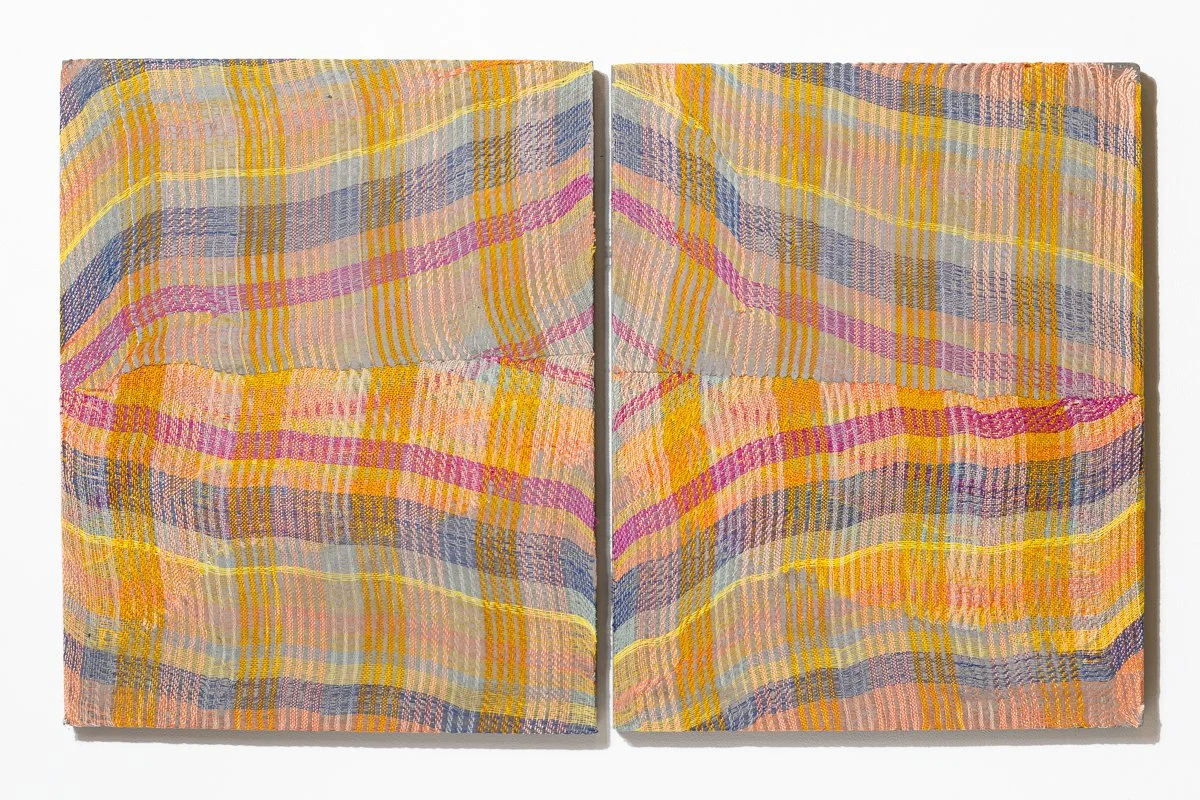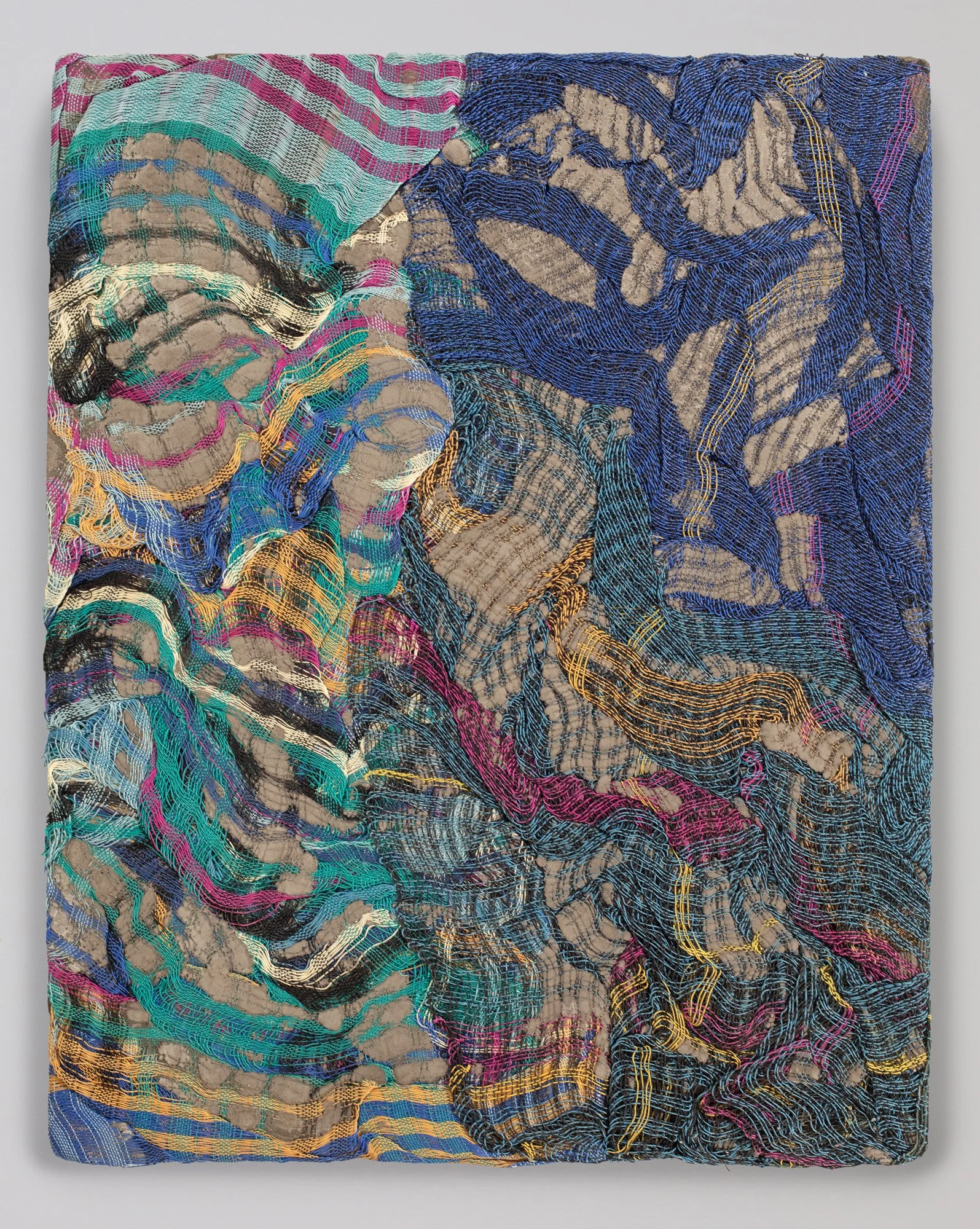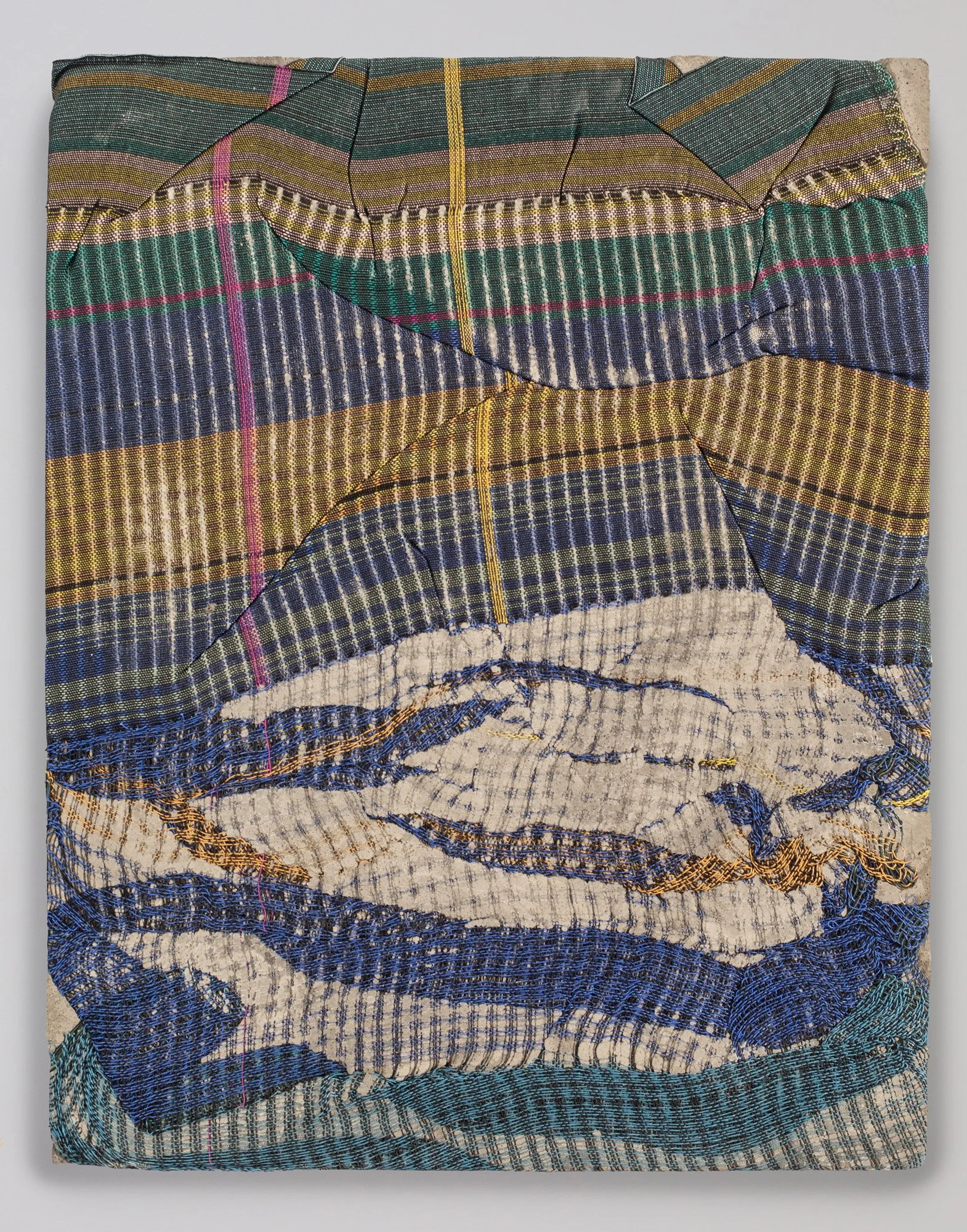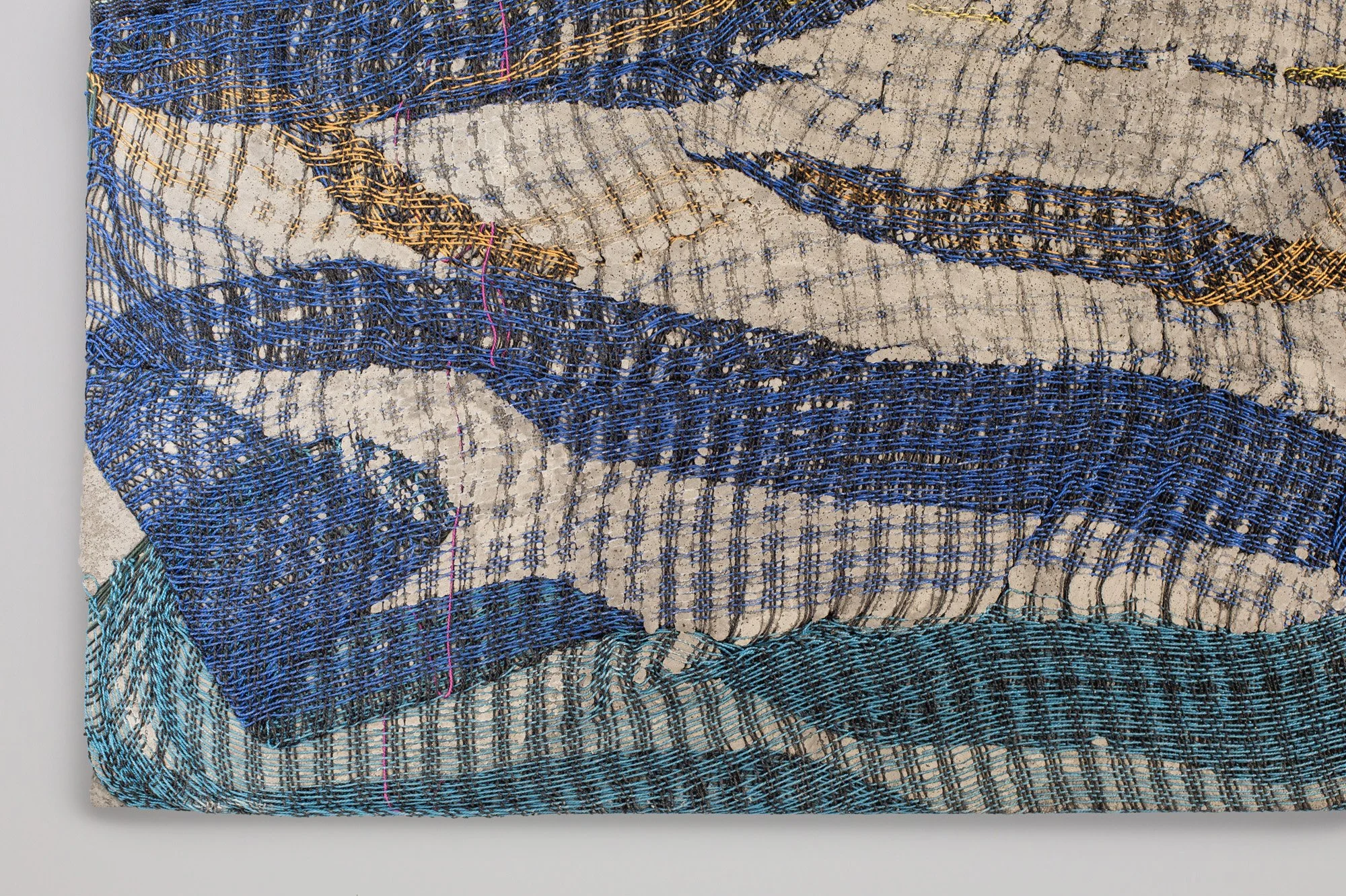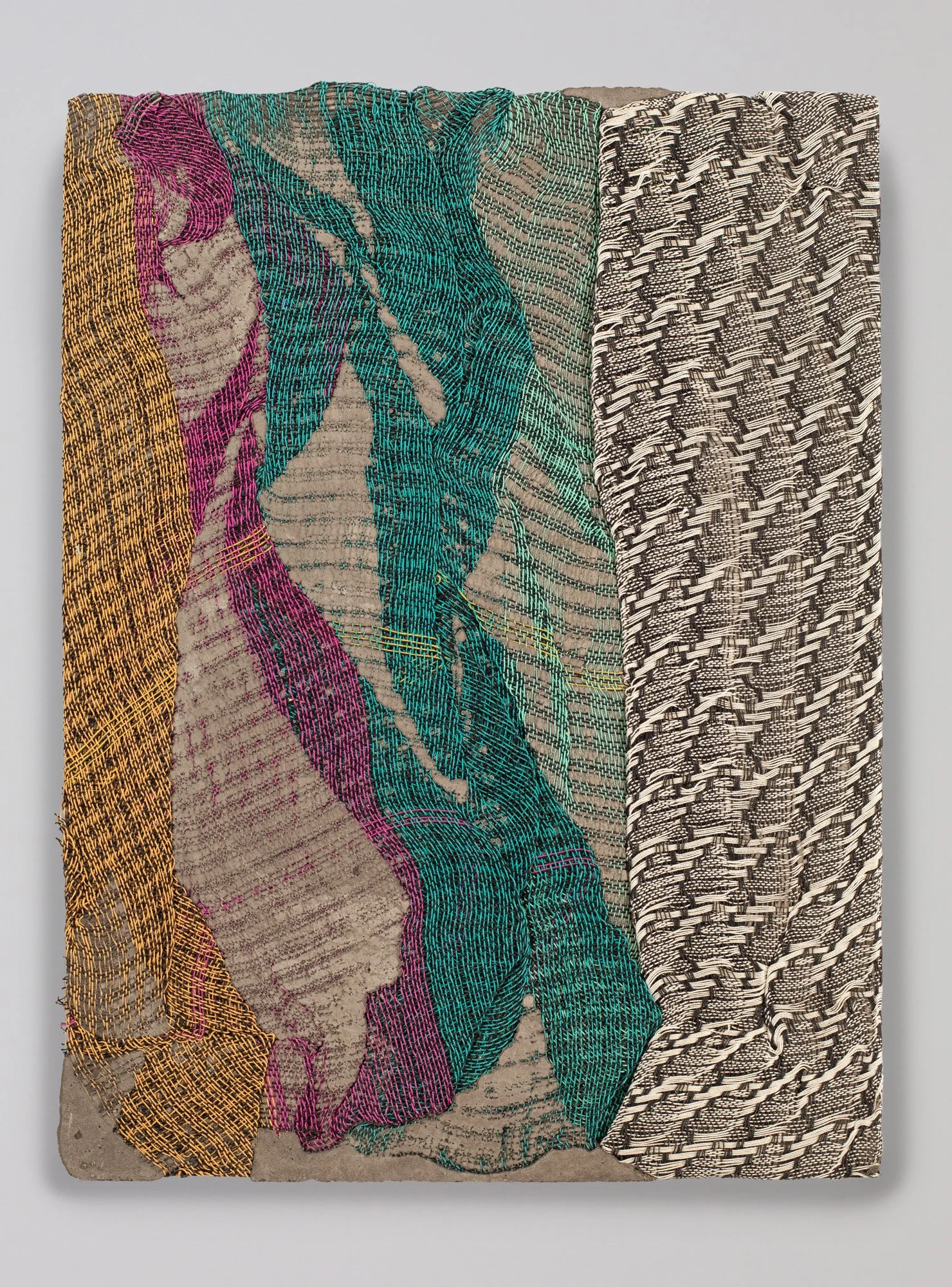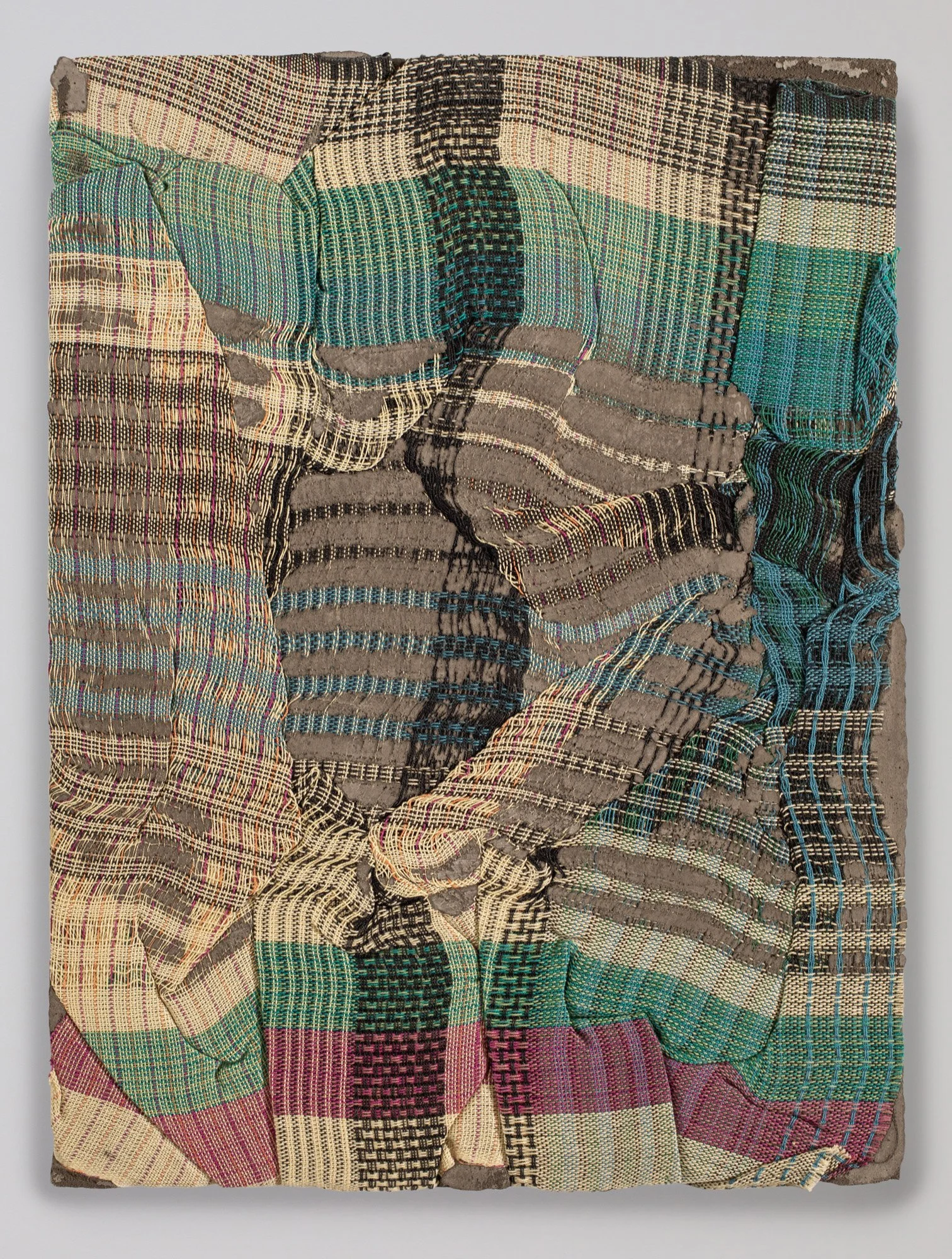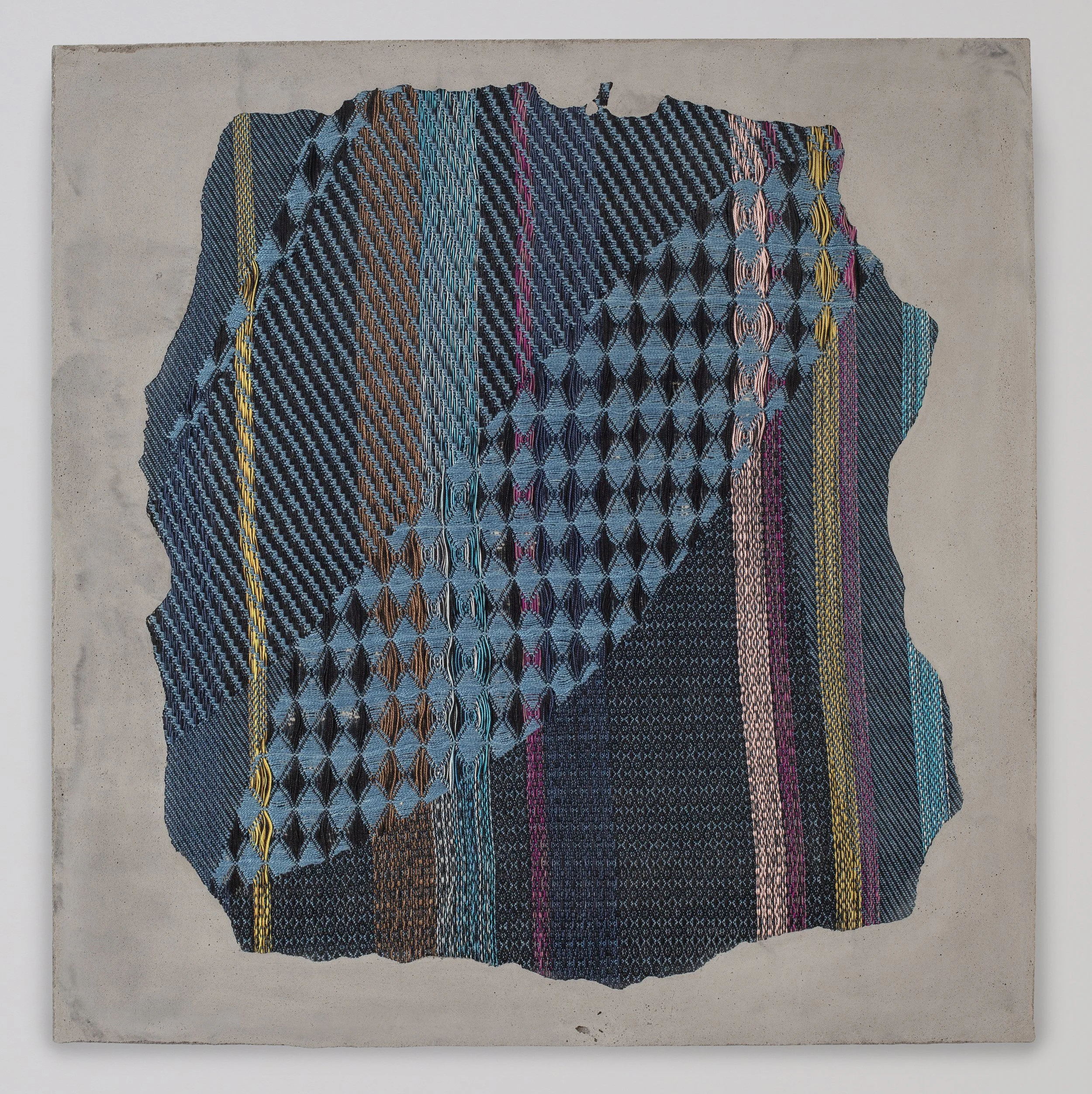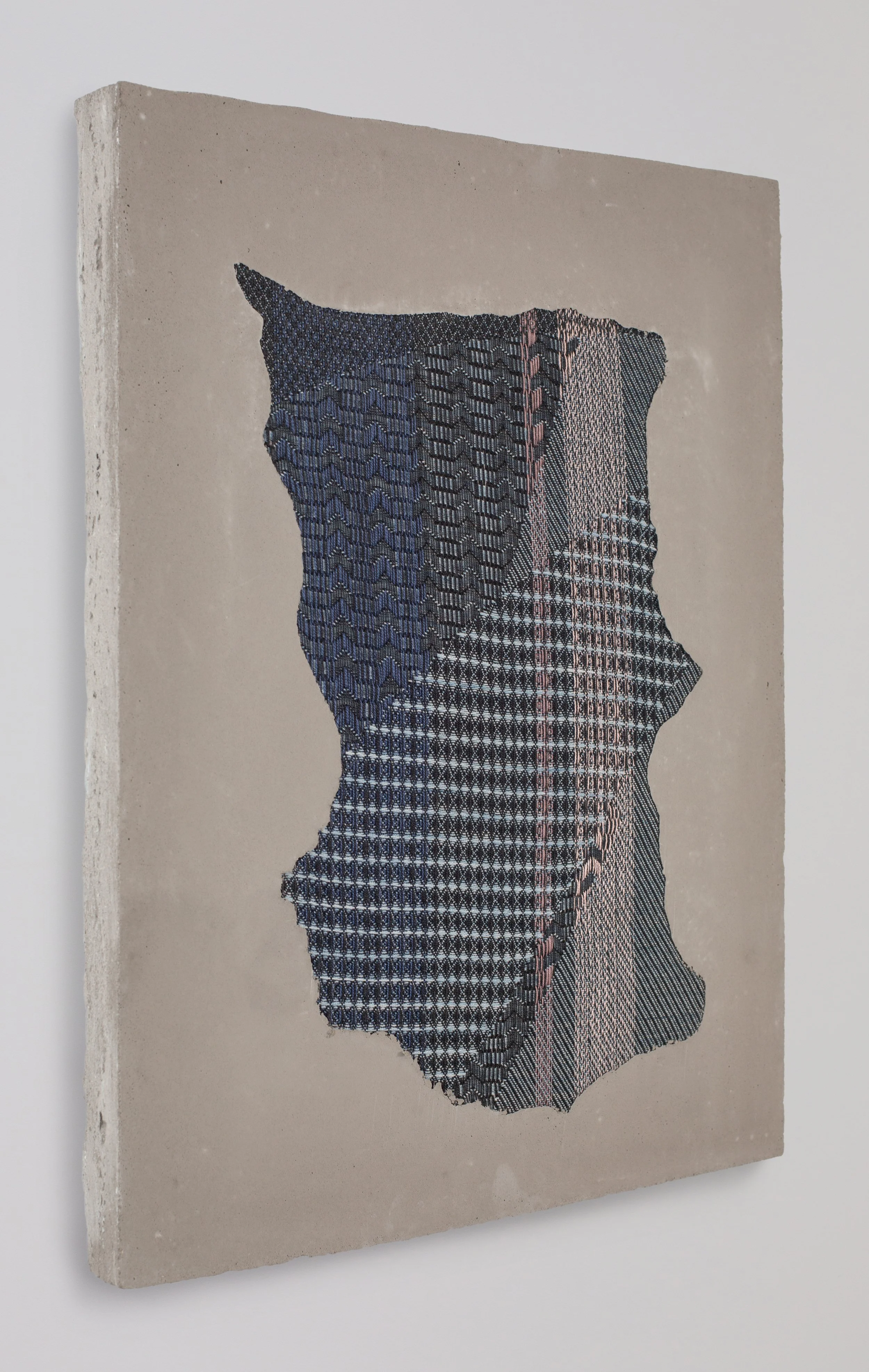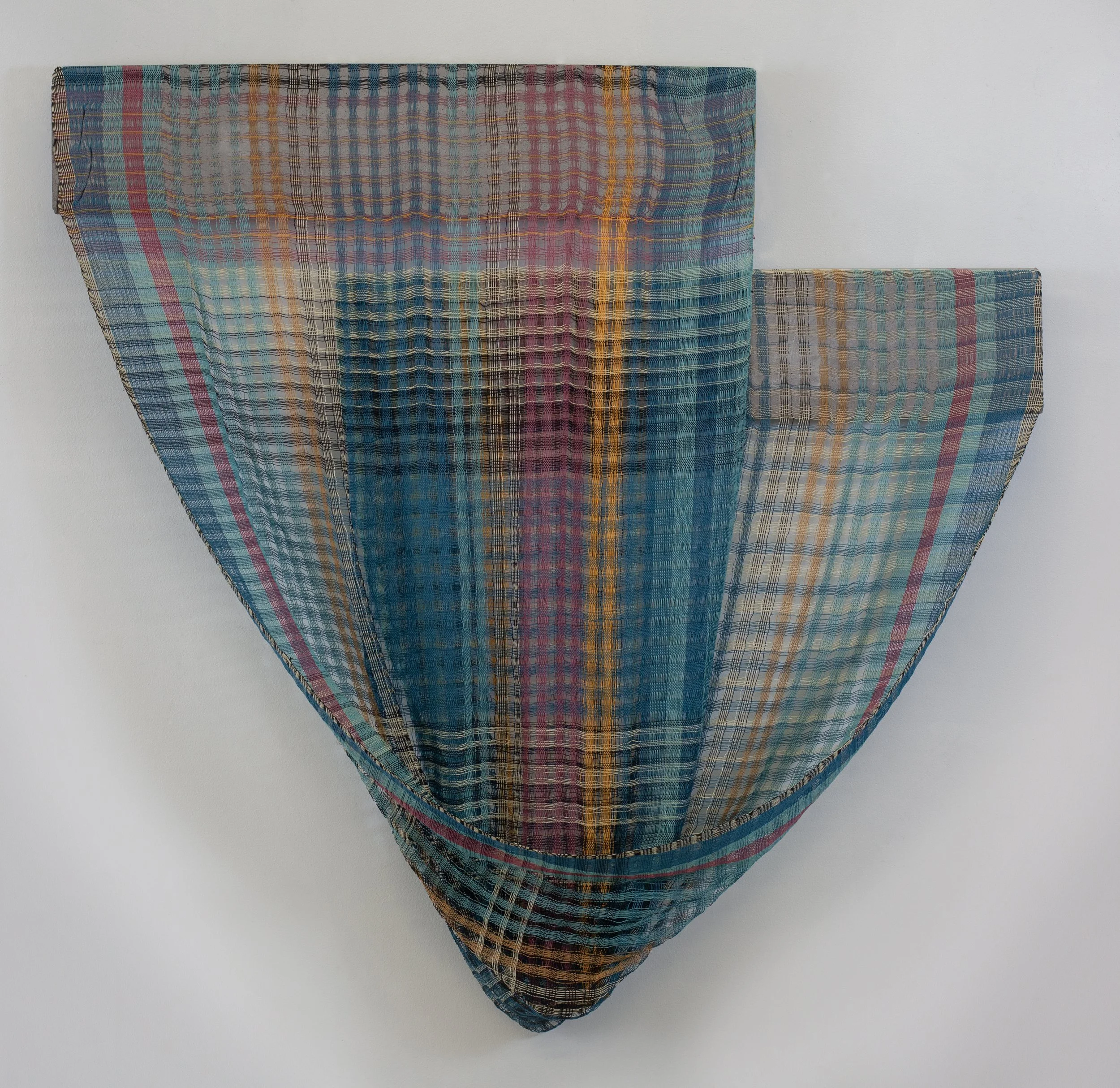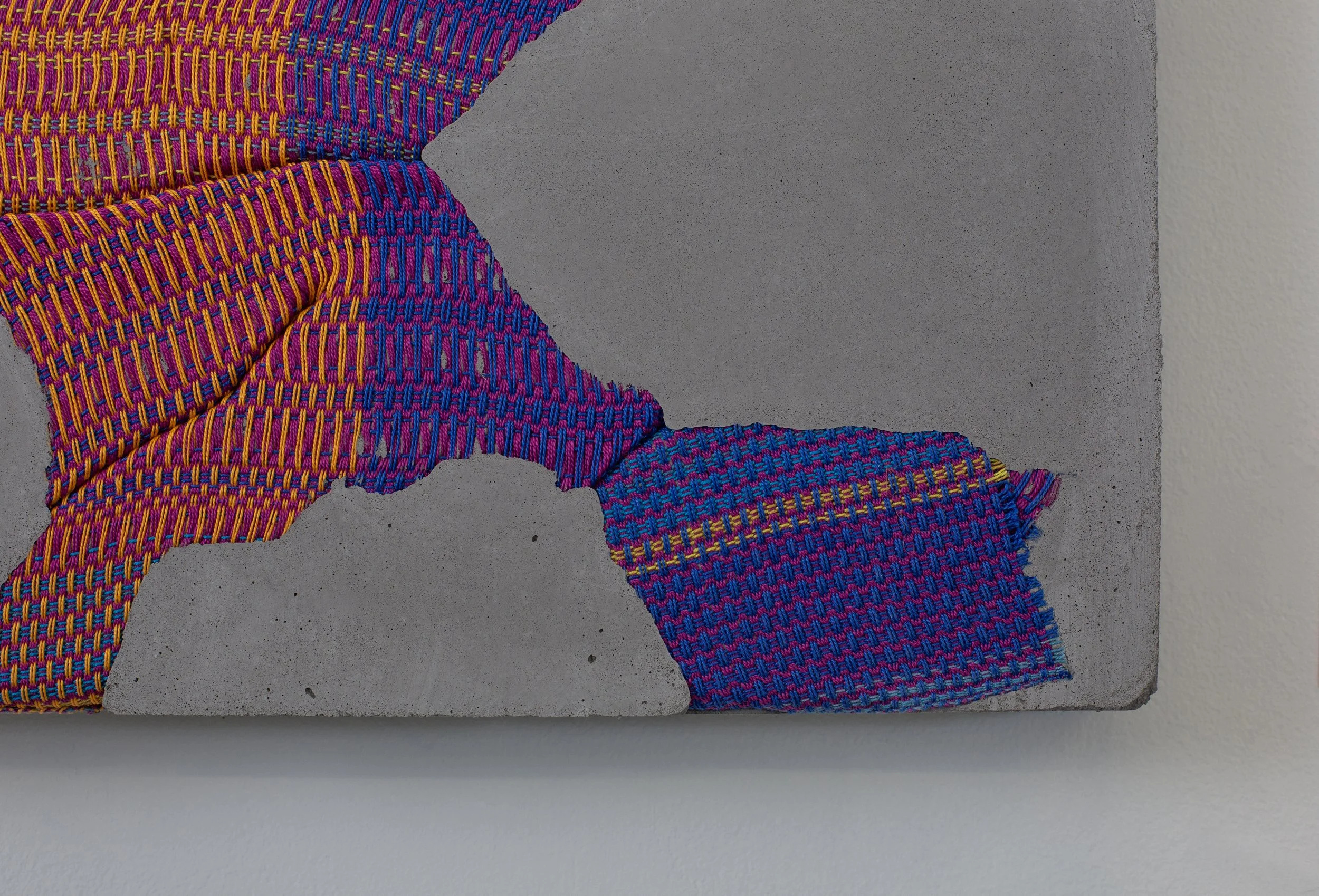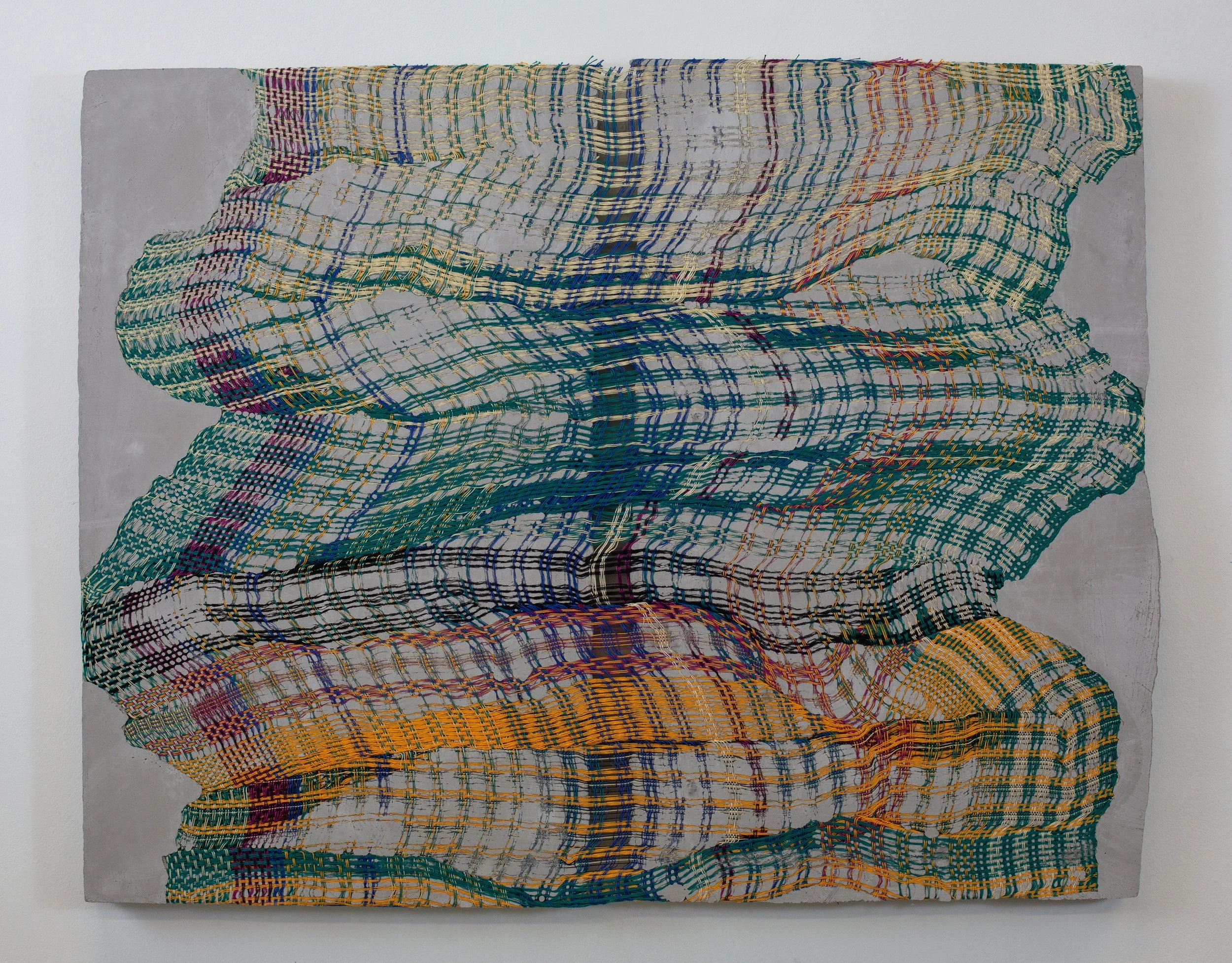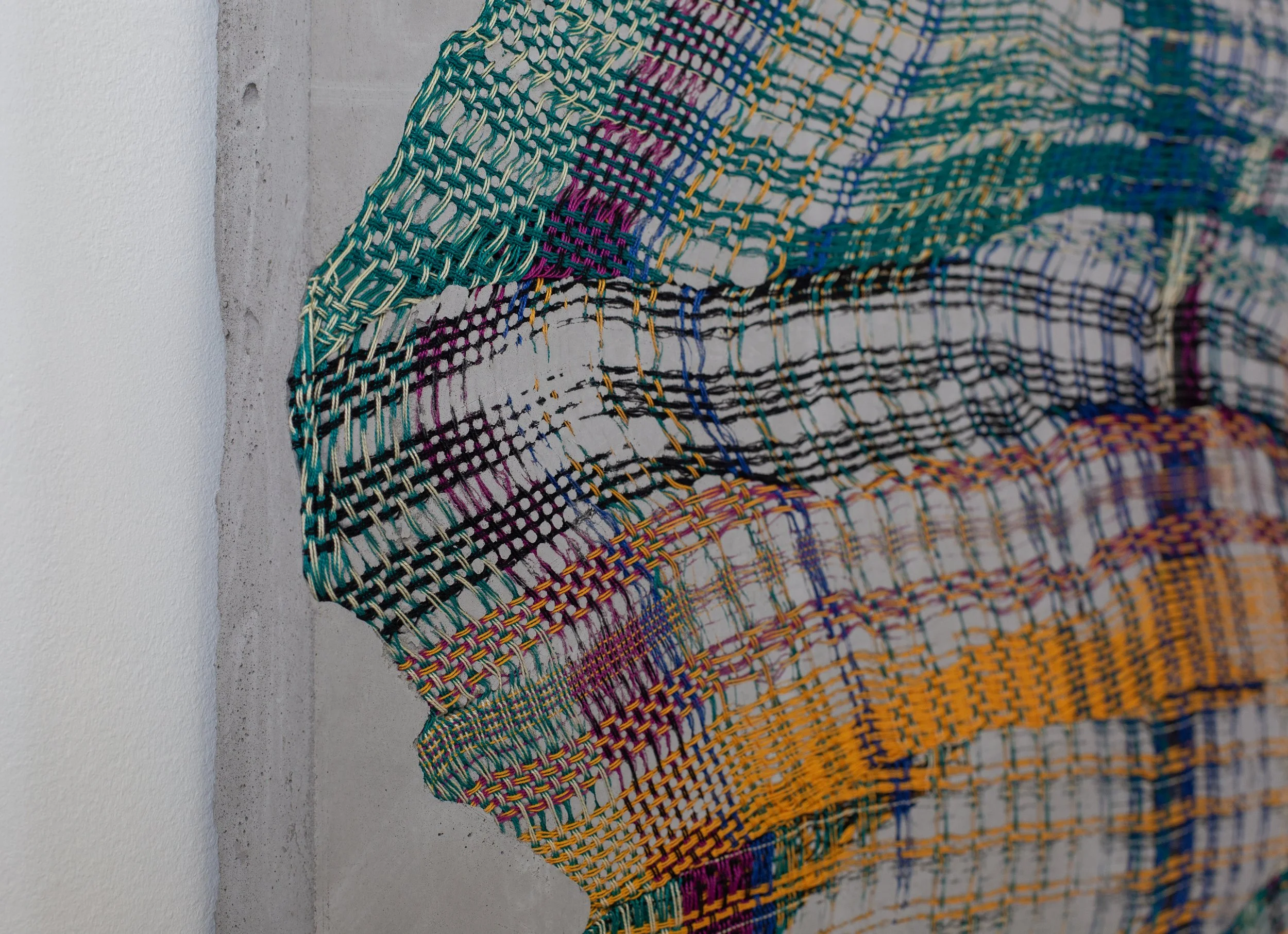Woven Concrete Series
A thread, made up of individual fibers, makes up a continuous line. It bends and stretches, supports weight, collapses and folds. As a practitioner, I think a lot about the life of each thread within a fabric. As an individual, each thread is prone to stress, strain and breakage, but as a collective the burden of tension becomes bearable. A cloth composes a tensile strength. It interlaces with its neighboring thread to create a greater sum of parts. And if a fold suggests an elastic surface, a tensile quality that yields to pressure, this is not a weakness; for an object that gives in is actually stronger than one that resists (Barnett, 1999). A fold can permit the opportunity to be oneself in a new way, a resiliency without changing one’s elemental properties.
In recent works woven textiles and architecture are explored as they pertain to movement—movement described by and remembered through the outlining material landscape. The movement through a landscape, the pliability of a textile, as well as their gridded systems, are described and explored in relation to social structures of citizenship and intersecting parts of a whole. Ultimately, recognition of these systems as boundaries and edges describes the life within.





